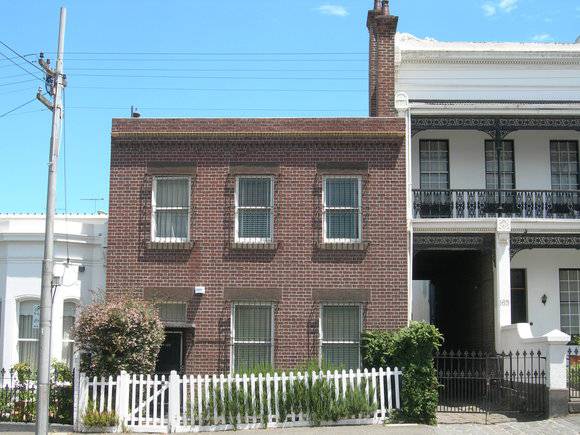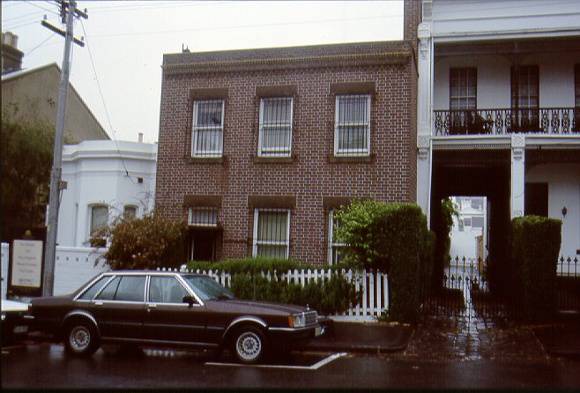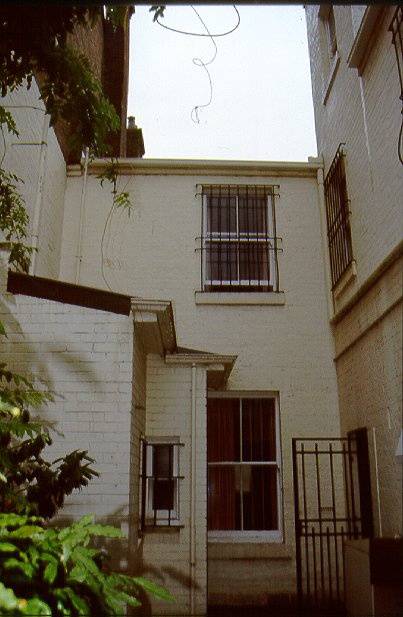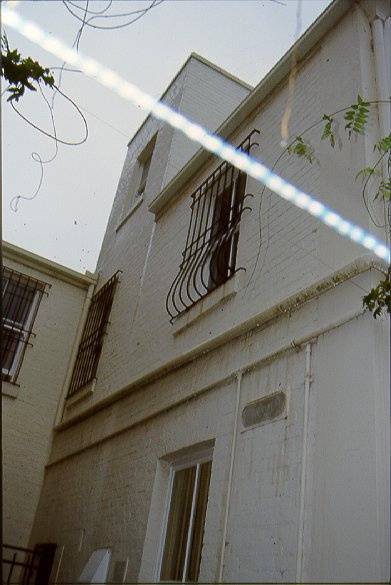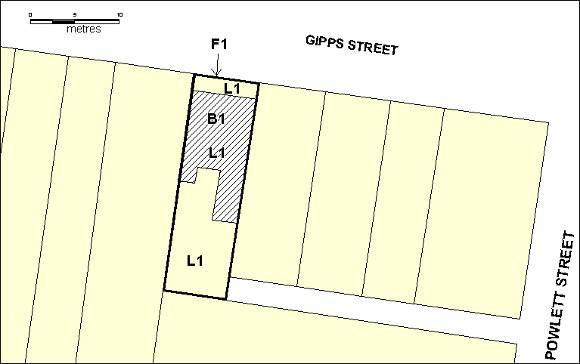| Back to search results » | Back to search page » |
|
LITTLE PARNDON
Location159 GIPPS STREET EAST MELBOURNE, MELBOURNE CITY
File NumberFOL/15/13429LevelRegistered |
|
Statement of Significance
What is significant? Little Parndon is a two storey brick house built by Ravenscroft and Oldfield in 1862 for the Austrian painter Eugene von Guerard. A rear extension was added in 1866. It is in a simple Georgianesque style with plain openings, a plain parapet and no verandah. Embellishment is restricted to stone sills and lintels and a simple brick cornice. The grilles over the windows and the picket fence are not contemporary to the construction of the house. Internally the original 1862 structure comprises an entry hall, four main rooms, two to each storey and upstairs bathroom. The ground floor rooms comprises a drawing room divided by bi-fold doors. There is a white marble fireplace to each section, probably dating from the early twentieth century. Stairs lead up from the main passageway to the two first storey bedrooms and a small bathroom. The bedrooms have built-in cupboards, possibly dating from sometime before the Second World War, and timber fireplaces. The 1866 extension comprises a three storey addition including a tower room. The extension consists of a ground floor vestibule, a kitchen, a first storey bedroom and tower room bedroom. The double-L stair rises to the tower room, which is square in plan with windows to all sides. The general decorative scheme is c1950, from the period of occupation by Lord and Lady Casey who lived at Little Parndon from 1949. How is it significant? Little Parndon is of architectural, aesthetic and historical significance to the State of Victoria. Why is it significant? Little Parndon is architecturally significant as a fine example of an early Melbourne town house in the English manner. It is characterised by stylistic restraint, graceful proportions and the unusual absence of a verandah. The face red tuck-pointed brickwork and simple brick cornice add considerable elegance to the main facade. The house is highly unusual for its plain face red brickwork that predates the fashion for polychrome work and marks the house as stylistically idiosyncratic in East Melbourne. Little Parndon is aesthetically significant for its intact internal decorative scheme of c1950. The decoration reflects the personal tastes of Lord and Lady Casey. It is unusual for a building of this age to demonstrate a period and style of extant decoration that is consistent throughout the house. Little Parndon is historically significant for its association with the migrant Austrian painter Eugene von Gerard. Gerard emigrated to Australia as a painter and teacher and was influential in the early development of Australian romantic landscape painting. In 1870, during his occupation of Little Parndon, he was appointed first Master of Painting at the National Gallery School, Melbourne, and was made curator of the National Gallery of Victoria. Little Parndon has additional historical significance for its associations with Lord and Lady Casey who occupied Little Parndon from 1949 to the early 1980s. Lord Casey was Governor General of Australia from 1965 to 1969. Lady Casey, an artist in her own right, was instrumental in the formation of the conservation movement in Melbourne during the 1950s. Maie Casey was co-editor of "Early Melbourne Architecture" in 1953, a book that helped raise awareness about the need for the conservation of the built environment in Melbourne.
Group
Residential buildings (private)
Category
Town House


